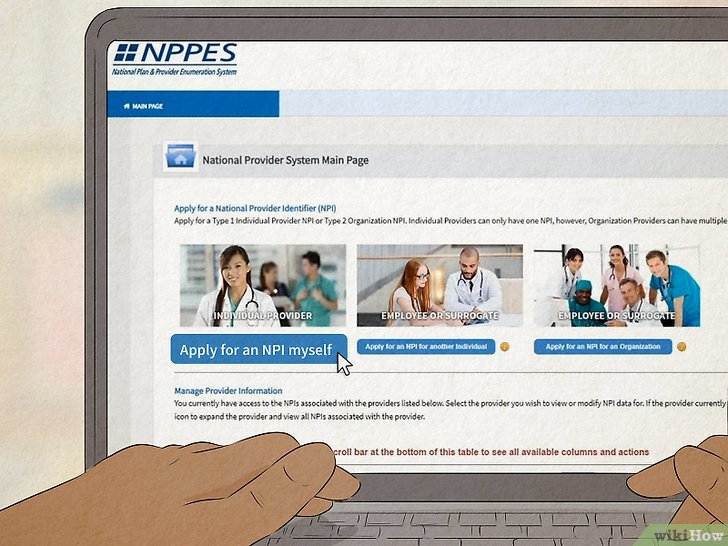All healthcare facilities must comply with certain standards regardless of whether they are individual entities or organizations. One of the regulatory standards is for healthcare providers to have an NPI. But what is an NPI number?
As experts in the healthcare industry, we created a comprehensive guide on the meaning and importance of NPI numbers if you are a healthcare provider, clearinghouse, or health plan. Also, we will reveal some practical tips on how to obtain one.
What Is an NPI Number?
According to the Health Insurance Portability and Accountability Act, every covered healthcare provider must have a National Provider Identifier or NPI. The NPI contains 10 digits and is used as a numeric identifier in HIPAA standard transactions.
Contrary to popular belief, the numbers that make up the NPI are meaningless. The NPI number is intelligence-free, meaning it doesn’t contain any information about the provider’s type, location, specialization etc.
The NPI was adapted to replace a number of other provider identifiers, like:
- Unique Physician Identification Number (UPIN)
- Medicare/Medicaid Provider Number (also known as OSCAR Number, Online Survey, Certification, and Reporting)
- National Supplier Clearinghouse (NSC) Number
- Provider Identification Number (PIN)
Who needs NPI?
NPI is required for all HIPAA-covered entities and healthcare facilities. HIPAA-covered entities are all healthcare providers that electronically transmit health information. They include:
- Healthcare providers.
- Healthcare clearinghouses: Processing health information on behalf of other organizations.
- Health plans: Health insurance companies, health maintenance organizations, employer-sponsored health plans and government programs that pay for healthcare, such as Medicare and Medicaid.
- Business associates: Third-party administrators assisting with claims processing, consultants performing utilization reviews, and independent medical transcriptionists providing transcription services.
If you are unsure whether your organization or individual healthcare facility falls into the category of a covered entity, you can use the CMS decision tool to find out.

Source: wikihow.com
Types of NPI
The Center for Medicare and Medicaid Services divides healthcare providers into two categories: Entity Type 1 and Entity Type 2. The Entity Type 1 includes individual healthcare providers, which might include:
- Pharmacists
- Physical therapists
- Physicians
- Psychologists
- Chiropractors
- Dentists
- Nurses
- Many more
On the other hand, Entity Type 2 is for organization healthcare providers who have a group of healthcare providers. Some examples include:
- Ambulance companies
- Clinics
- Group practices
- HMOs
- HHAs
- Hospitals
- Pharmacies
- Nursing homes
- Laboratories
- Residential treatment centers
What Is an NPI Number Used For?
The NPI acts as an identifier of the healthcare provider in HIPAA standard transactions. According to the industry standards, the NPI must be used when information is transferred between two parties.
Subjects that use NPI in their financial and administrative transactions are healthcare providers, health plans and healthcare clearinghouses. Also, we, as medical billing experts, are required to use the NPI for billing purposes. The NPI is commonly used in electronic data interchange, which includes:
- Claims submission
- Encountering information about claims and their status
- Benefits and premium payment coordination
- Eligibility and enrollment
- Payment and remittance advice
- Referrals and authorizations
How Is the NPI Number Obtained?
You can use one of the three possible ways to obtain an NPI. For one, you can apply for an NPI number online by using the National Plan and Provider Enumeration System. Obtaining an NPI is free of charge. On average, it takes 20 minutes to fill out the application form.
Another way to get an NPI is to hire an Electronic File Interchange Organization. They will submit the application for you.
Also, you can get a copy of the National Provider Identifier Application/Update Form. Fill it out, sign it, and send it to the NPI Enumerator address in Windsor Mill, MD.
After you apply, it might take up to 20 business days before you get the NPI. The actual time required to obtain an NPI number generally depends on the applying method you use. In most cases, the process takes less than 10 business days.
Once you obtain your NPI, you won’t need to get a new one or change it if there are some information changes about your facility. For instance, your NPI stays the same regardless of the fact that you now operate on a new address, or have changed your name or taxonomy.
Important note: The National Plan and Provider Enumeration System, or NPPES in short, is the sole provider of NPIs in the US. In addition, they are responsible for keeping and updating the information of the healthcare providers regarding their NPIs.
Limitations of NPI Numbers
Now that you understand what an NPI number is, it might be best to go through the common misconceptions by emphasizing what the NPI is not. Healthcare facilities often think that getting an NPI will change or replace their current Medicare enrollment. However, that is just a myth.
Also, when you get an NPI, that doesn’t mean you will be enrolled in a health plan, nor does it guarantee a health plan payment. With the NPI, the entire process is more transparent and efficient, but it can’t reduce delayed or denied claims.
Ultimately, just because you have an NPI as a healthcare provider doesn’t make you licensed or credentialed to provide patient care.
Regulatory Compliance and NPI
The obtaining of a National Provider Identifier was adopted by the NPI Final Rule. The NPI has been set as a standard in the healthcare industry since January 2004. Since then, it has been required for all HIPAA-covered entities to have an NPI to use it for enrollment applications for Medicare and claims reporting.
However, you must also update your information to stay compliant with the regulations. The easiest way to update your data is by logging into your NPPES profile. You can also submit a paper application, by filling out the CMS-10114 form, which is the same one you use to apply for an NPI.
As a covered healthcare provider, you are obligated to report your changes within 30 days after they become effective. If you don’t respect the deadline, a complaint can be filed against you because you will no longer comply with the NPI Final Rule.
To check whether your information is up to date, you can use the NPPES Registry tool. Note that your NPI will remain the same, regardless of the type of changes you made in your healthcare facility.
Source: freepik.com / Photo Contributor: rawpixel.com
Future Trends in NPI Usage
In a digitally-led process, efficient identification and communication are crucial. As most of the administrative work is done virtually in the healthcare system, the usage of NPI is expected to grow.
The NPI has turned out to be an effective way for healthcare provider identification. Following the success of the NPI, the development and implementation of a national patient identifier system is widely recommended.
It might be expected for the list of entities that must have an NPI to grow. The NPI might become a standard for all subjects involved in the healthcare industry besides the ones that are HIPAA-covered entities.
Conclusion
What is an NPI number? Understanding it is vital for every HIPAA-covered entity. The process for obtaining one is straightforward and lets your healthcare facility stay compliant with the regulations and allows you to use electronic transactions.
If you want to simplify your medical billing or medical credentialing, minimize the chances of denied claims, and improve your entire revenue cycle management, contact our CLICKVISION team. We are here to assist you!

With a strong background in the marketing industry and healthcare leadership roles, Filip is responsible for CLICKVISIONBPO’s sales strategies and onboarding new clients. With a passion for sharing insights gained from his experience, he also shares valuable knowledge through industry related articles.
